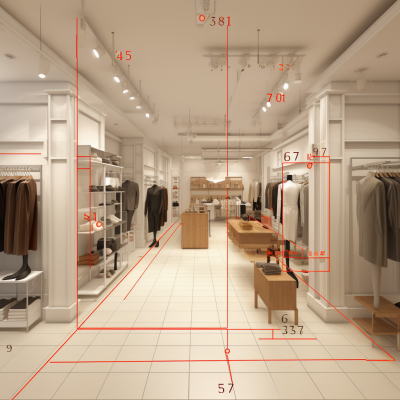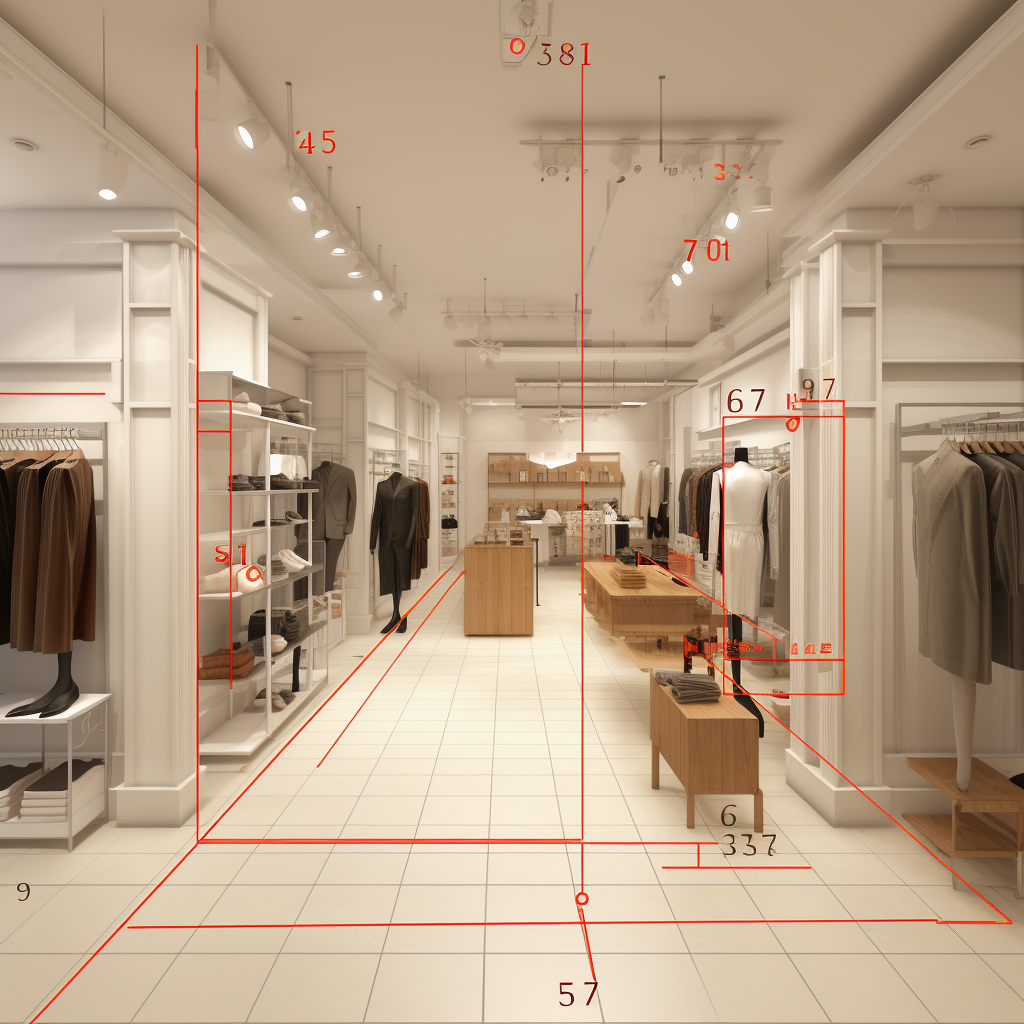Table of Contents
Table of Contents
In the competitive realm of retail, understanding the metric of average retail sales per square foot is crucial for evaluating the relative success of different locations. This metric not only provides insights into a company’s efficiency but also its profitability and operational health. It’s typically measured on an annualized basis, but monthly numbers, year-on-year numbers, and seasonally adjusted ones can offer additional insights into retail performance and business strategy.
See why retail businesses choose Solink to drive ROI through lower expenses and higher revenue.

What Is average retail sales per square foot?
Average retail sales per square foot is a measure used to assess the efficiency and productivity of the retail space. It is calculated annually but can also be computed monthly for a more granular view. Monthly numbers are especially important when evaluating seasonally important periods, for example back to school and Christmas shopping periods.
This metric is paramount as it helps businesses gauge their performance against industry benchmarks, competitors, and past performances.
How do you calculate average retail sales per square foot?
The calculation of average retail sales per square foot can be achieved using one of two formulas:
- Sales per square foot = net sales/sales space
- Sales per square foot = net sales/total retail space
Most businesses base their numbers on the sales area, also known as the center store. However, utilizing the total store area for this calculation is vital as it better represents the cost of the location.
To obtain the monthly value, divide the annual sales per square foot by 12.
Average sales per square foot examples
To provide context and a clearer perspective, consider the following examples from various retail categories:
- Apple: $5500/sqft
- Tiffany’s Co.: $3000/sqft
- Costco: $1638/sqft
- Walmart: $574/sqft
- Target: $300/sqft
These examples illuminate the variance across subcategories and emphasize the influence of brand positioning and product pricing on sales per square foot.
While the average sales per square foot across the entire US retail market is $325/sqft, companies selling a large assortment of goods and/or high price point products can achieve many times this number.
Average sales per square foot by retail sub-sector
The type of store, product pricing, and store size play pivotal roles in determining the average sales per square foot. Larger stores and those offering more expensive products usually exhibit different benchmarks compared to their counterparts.
Here are some industry-specific examples of average retail sales per square foot benchmarks.
Restaurant average sales per square foot
The restaurant sector displays variability with full-service restaurants averaging over $150/sqft, while quick-service restaurants are generally above $200/sqft. This distinction highlights the impact of service type on the average sales per square foot in the restaurant industry.
Retail average sales per square foot
Luxury brands, big box stores, and warehouse outlets typically exhibit higher average sales per square foot. However, the national average in the United States stands at $325/sqft, underscoring the diversity in this sector.
Convenience store average sales per square foot
The average sales per square foot for convenience stores is approximately $330/sqft. This is based on an average store size of 2600 sqft and annual sales of $1,720,000 across the USA.
Grocery store average sales per square foot
Grocery stores boast an average of $500/sqft. However, several chains exceed this, reaching $1000 on average, with membership locations like Costco even tripling that average.
How to improve average sales per square foot
Improving average sales per square foot involves a series of strategic steps. Each step, detailed below, outlines the approach and explains its significance in enhancing this vital retail metric.
- Refine store layout
- Utilize technology and data
- Increase basket size
- Develop loyalty programs
- Organize in-store events
- Amplify local marketing
- Educate employees on upselling and cross-selling
- Optimize product assortment
- Engage your online audience
1. Refine store layout
A meticulously organized and consumer-centric layout can significantly influence sales. Streamlining the arrangement of products and cultivating a welcoming shopping ambiance can attract more consumers and prompt purchases, enhancing the average retail sales per square foot.
Additionally, leveraging precise data regarding consumer behavior and preferences can further tailor the store layout, guaranteeing a more personalized and efficient shopping experience. In this context, the Solink platform emerges as a valuable asset, offering advanced insights through heat maps.
These heat maps facilitate improved merchandising and store layout design by identifying high-traffic areas where high-margin items can be strategically placed. Furthermore, analyzing patterns of items frequently purchased together can inform product placement, ensuring that complementary products are positioned near each other or, if strategic, spaced apart.
This utilization of data-driven insights from the Solink platform not only enhances the customer’s shopping experience but also optimizes the store’s layout for increased profitability and improved sales per square foot.
2. Utilize technology and data
Employing technological solutions like the Solink platform can substantially augment retail metrics. This platform collates and illustrates data, including average sales per square foot, allowing businesses to comprehend the narrative behind the figures.
Accompanied by video insights, the Solink platform empowers retailers to scrutinize customer interactions and refine store operations, ultimately enhancing sales and improving the average retail sales per square foot.
3. Increase basket size
As highlighted, stores retailing high-value items like jewelry or electronics invariably yield higher sales per square foot. Hence, to amplify your sales per square foot, elevating your transaction value is essential. Vendors retailing everyday items should explore strategies to enlarge their basket size and encourage customers to purchase more.
4. Develop loyalty programs
Loyalty programs serve as an excellent strategy to incentivize customers to frequent your stores. They also encourage customers to return for additional rewards. Receiving points per purchase represents one of the most prevalent loyalty programs, where customers accrue redeemable points with each transaction.
5. Organize in-store events
The worldwide lockdowns resulted in a burgeoning demand for in-store experiences, evidenced by a 43.8% surge in customer foot traffic across US stores in 2021 compared to 2020. In-store events represent an effective strategy to enhance the customer shopping experience.
6. Amplify local marketing
Focusing on your local audience, within the same vicinity or region as your business, is another viable strategy to augment sales per square foot. This approach is particularly effective for restaurants or boutique retail stores with a distinct location.
7. Educate employees on upselling and cross-selling
Another potent strategy involves leveraging in-store tactics like cross-selling and upselling. This ensures that customers leave with more products. Educate your sales representatives on promoting items that complement the customer’s chosen product or proposing a more premium version of the selected item.
8. Optimize product assortment
The floor space in your store is invaluable. It’s imperative not to squander space showcasing products that aren’t generating sales. Analyzing your sales and inventory reports for a specific period can help identify the fastest-selling products. Ensure that you adjust your product assortment and prioritize stocking best-selling products and collections.
A greater product assortment can both increase the average size of sale and improve the conversion rate. Visitors are more likely to find what they are looking for, and some other things as well, if you have more individual SKUs.
9. Engage your online audience
Online sales have witnessed a significant increase recently. By 2025, online sales are projected to constitute a quarter of total global retail sales. While customers enjoy browsing online, a considerable number prefer the in-store experience for making purchases.
Pair retail metrics with video on the Solink platform
The Solink dashboard is a robust tool that gathers and visualizes retail data, including average sales per square foot. By integrating video, it allows retailers to delve deeper into the story behind the data, offering actionable insights for improvement. Understanding and leveraging this platform can empower businesses to optimize their operations and enhance their retail metrics, driving success in the competitive retail landscape.
Find out how Solink helps tell the story behind retail data.

